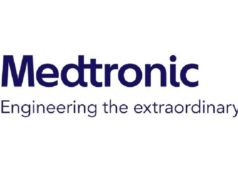
A multicentre real-world review of 10kHz of spinal cord stimulation (SCS) for the treatment of chronic back and leg pain has elicited positive results, complementing the findings of a previously published randomised controlled trial (RCT). Thomas Stauss (Advance Pain Management, Greenfield, USA), and colleagues report that at least 70% of the 1,660 patients reviewed responded to therapy; a figure of which was sustained through 12-months.
The research, recently published in Annuals of Clinical and Translational Neurology, aimed to reduce the gap in the literature regarding the lack of large observational studies on this type of therapy. Stauss and colleagues performed a real-world, multicentre, retrospective review in order to investigate the efficacy of 10kHz SCS in a remarkably large number of patients (1,660) with chronic trunk and/or limb pain.
The data, retrospectively sourced from a global database, were inclusive of patients that were trialed and/or permanently implanted with a Senza system (Nevro), delivering high frequency SCS at 10kHz between April 2014 and January 2018. Both academic and non-academic centres (n=8) across three countries participated in the review, with each site having experienced at least 100 implanted patients over a two-year period.
The authors evaluated responder rates at three, six, and 12-months post-implantation. Patient response was defined as ≥50% pain relief compared with initial baseline findings. During last visit analyses, Stauss and colleagues investigated overall change in function, sleep, quality of life and medication intake—and also compared these to baseline. They reported that the mean time between implantation and the last visit was 8.9 months (range: 0.1–33.2).
Of the 1,660 patients treated with high frequency SCS, 84% had both chronic back and leg pain. At least 70% of patients were found to respond to therapy throughout 12 months of follow-up. Of importance, Stauss and colleagues reported that this sustained responder rate was corroborated by the last visit value (74.1%).

Furthermore, the majority of patients reported concomitant improvements in function (72.3%), sleep (68%), and quality of life (90.3%) at their last visit compared to baseline. Additionally, 32.1% (n=1,070) of patients reported a decrease in medication intake at their last visit (40% of European patients and 28.9% of American patients).

Safety data—available from 1290 patients—indicated that 48 patients (3.7%) had their devices explanted. Twenty-two (1.7%) were removed following infection, 15 (1.2%) due to loss of efficacy, and a further 11 (0.8%) were removed for other reasons. On discussion of this finding, Stauss and colleagues put forward that this overall explant rate was “far less than historical norms for traditional spinal cord stimulation, such as those utilising low frequencies.”
Interpreting the data, Stauss and colleagues state that the real-world results are consistent with the findings of a previously published RCT. However, they allude to limitations of the review, all of which they stated were related to the real-world setting as well as the study’s retrospective nature, lack of control and use of non-standardised measures for particular outcomes, such as sleep. Additionally, as the data were not entered systematically across all centres, Stauss et al acknowledge that the dataset may have been nonhomogenous. Furthermore, the authors point to a methodological shortcoming as they write “The study evaluated overall pain relief rather than separate back and leg pain relief as measured in the SENZA-RCT.”
Despite the caveats, Stauss and colleagues conclude that the current retrospective analysis revealed that the therapy provided sustained an effective pain relief in >70% of patients at all follow-up time points. Thus, the review provides complementary evidence to support the treatment of chronic back and leg pain with high frequency SCS at 10kHz.













